Self-Sufficient Green Dream Home is One With Surroundings
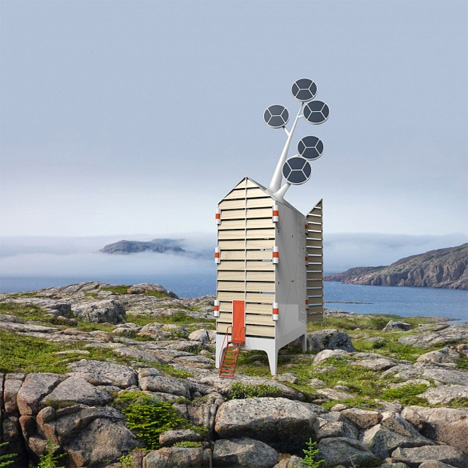
The perfect nature retreat is one that allows you to experience your natural surroundings without actually disturbing nature. Isolée, a low-impact nature retreat designed by Frank Tjepkema of Dutch design studio Tjep, seamlessly blends nature with technology in a self-sufficient dream house.
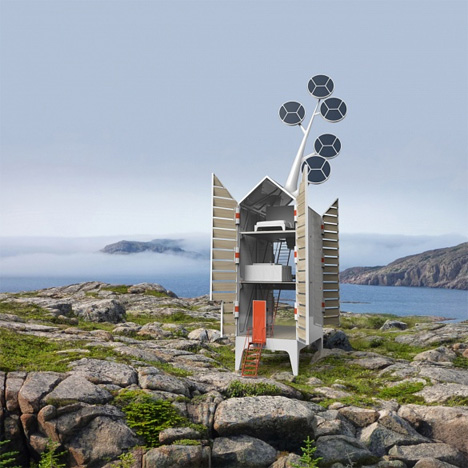
The three-story home is meant to touch and influence nature as little as possible. It is tall rather than long to minimize the home’s physical footprint on its surroundings. The structure is supported by four legs which lift the home off of the ground; stabilizing poles extend into the earth to hold the building steady.
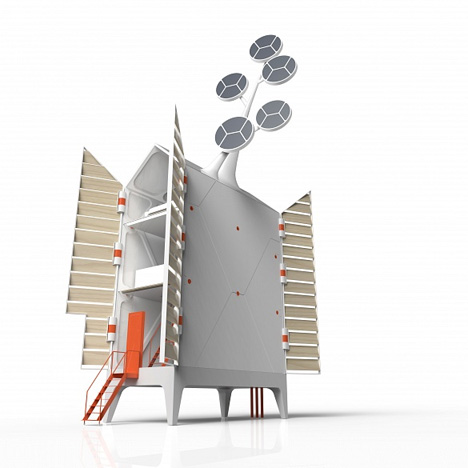
This detail allows the elements to flow under and around the home, almost as if there wasn’t a building there at all. A tall set of ladder-like stairs lead up from the ground to the front door.

Perhaps the most visually arresting part of the design is the Isolée’s roof-perched solar “tree.” This group of solar collectors harnesses the energy of the sun to power the entire house. The panels move just like plants throughout the day to follow the sun, always getting the maximum amount of exposure possible.
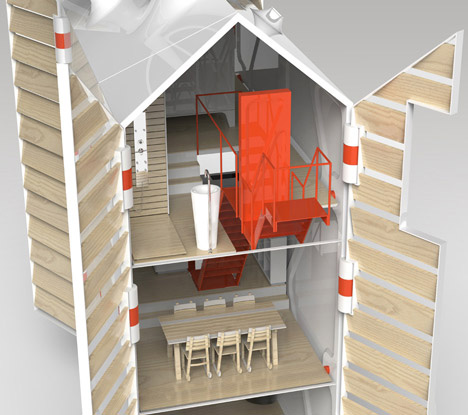
Reducing the delineation between the home and its surroundings, the facades of the Isolée open with computer-controlled motors. They can be closed easily with the touch of a button, or they close automatically when a storm is approaching.
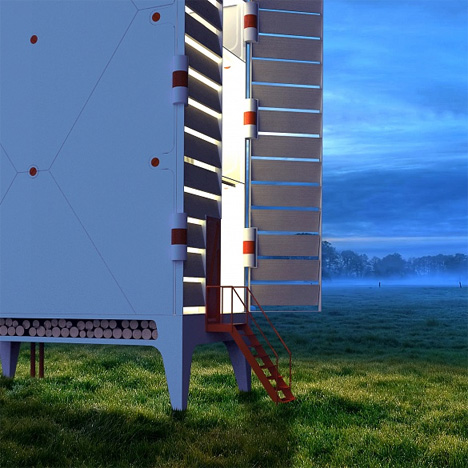
Heating is provided via a system of heated water pumped through the walls. A wood-burning stove heats the water, which is then circulated through the home with a solar-powered electrical system. A cavity in the underside of the home holds wood for the stove and can be accessed from either outside or inside of the house.



The stairs are a unifying aspect inside the unusual home. They run in a continuous system from the front door all the way up to the top story, where the path terminates in a terrace that would offer a spectacular view of the home’s surroundings.
According to the designer, the goal in creating this home concept was to create an abode that is as intentionally designed as the electronics and consumer products we carry around every day. To him, it makes no sense to spend our days with exceptionally-designed objects only to come home to live in a “stack of bricks.”




